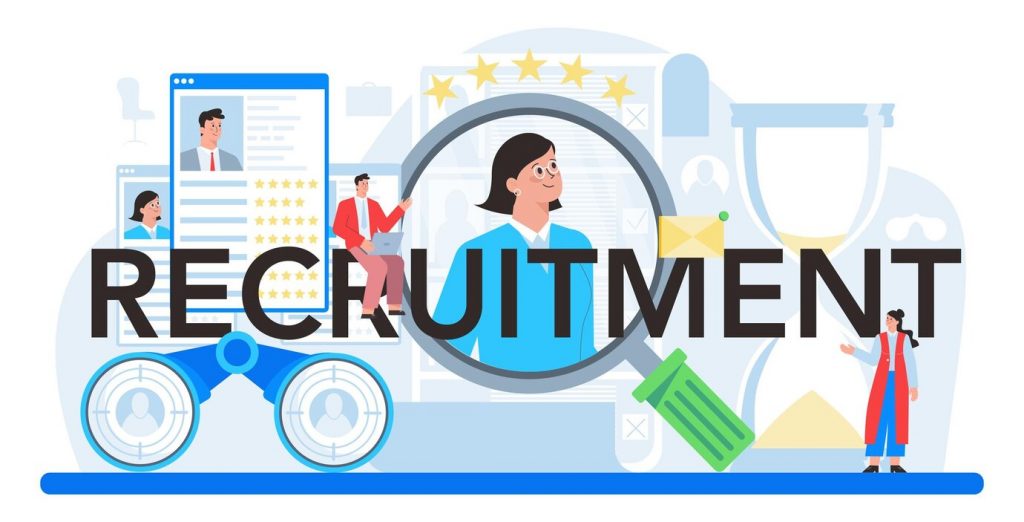Introduction
The glass ceiling in hiring is an invisible but formidable barrier that prevents qualified individuals—particularly women and minorities—from advancing into leadership roles. While progress has been made in workplace equality, systemic barriers continue to limit career advancement for many professionals.
This issue is not just about fairness; it directly impacts organizational success. Companies with diverse leadership teams outperform competitors, yet executive roles remain disproportionately filled by men. According to McKinsey’s 2023 Women in the Workplace report, women hold only 28% of C-suite positions, despite making up nearly 50% of the workforce.
Understanding the glass ceiling in the workplace is crucial for both individuals striving for career growth and organizations looking to foster inclusive environments. This article explores what the glass ceiling is, its impact on career advancement, the key barriers reinforcing it, and how both companies and individuals can work to break it.
Also Read: Top Trends Shaping Interview as a Service in 2025 & Beyond
Understanding the Glass Ceiling
Definition of the Glass Ceiling
The glass ceiling refers to an invisible, artificial barrier that restricts certain groups—primarily women and minorities—from advancing beyond a certain level in their careers. Unlike official company policies, these barriers are deeply rooted in organizational culture, biases, and systemic inequalities.
Historical Background & Origin of the Term
The term “glass ceiling” was first popularized in the 1980s, when Marilyn Loden used it to describe the challenges women face in leadership advancement. Over time, the concept has expanded to include other marginalized groups who experience career limitations despite having the necessary qualifications.
Impact on Career Growth and Leadership Roles
The glass ceiling effect on female professionals is particularly pronounced in industries like finance, technology, and politics. Studies show that:
- Only 10% of Fortune 500 CEOs are women (Pew Research, 2024).
- Women are 24% less likely than men to receive promotions at early career stages, reducing their leadership pipeline (LeanIn, 2023).
- Black and Hispanic employees make up less than 15% of corporate executives, despite representing nearly 40% of the U.S. workforce (Harvard Business Review, 2023).
This lack of representation isn’t due to a lack of talent—it’s a result of systemic barriers to leadership roles that need to be actively addressed.
Also Read: Role of AI in Eliminating the Glass Ceiling in Recruitment
Common Workplace Barriers Contributing to the Glass Ceiling
The glass ceiling in the workplace is reinforced by multiple workplace challenges. Some of the most common barriers include:
Gender Bias & Discrimination
- Unequal pay: Women still earn 82 cents for every dollar a man makes (U.S. Bureau of Labor Statistics, 2024).
- Limited promotions: Women and minorities are less likely to be promoted to managerial roles compared to equally qualified white male colleagues.
Lack of Mentorship & Sponsorship
- Women and minorities often lack access to influential mentors and sponsors, which limits career growth opportunities.
- Research shows that 70% of executives who reach C-suite roles had a mentor or sponsor advocating for them (Forbes, 2023).
Stereotypes & Prejudices
- Women are often perceived as less assertive or ambitious, leading to fewer leadership opportunities.
- Leadership qualities such as “decisiveness” and “dominance” are traditionally associated with men, reinforcing biased hiring and promotion practices.
Work-Life Balance Challenges
- Career breaks for parenting, caregiving, or personal reasons disproportionately affect women’s long-term career progression.
- A LinkedIn study (2023) found that women who take career breaks experience a 30% slower promotion rate than their male counterparts.
Limited Representation in Leadership
- The lack of female and minority leaders in executive roles discourages younger employees from seeing themselves in leadership positions.
- A “mirror effect” occurs, where existing leaders—who are predominantly male—tend to promote individuals who resemble them.
Also Read: Glass Ceiling in the Workplace: Signs, Impact & How to Address It
Effects of the Glass Ceiling on Employees & Organizations
Impact on Career Progression
- Employees who hit a glass ceiling in hiring often feel demotivated, leading to reduced productivity and engagement.
- A Harvard Business Review study (2023) found that employees who perceive bias in promotions are 3x more likely to disengage from their work.
Increased Employee Turnover
- Talented professionals leave companies where they feel their growth is stunted.
- Organizations that fail to address the glass barrier effect see higher turnover rates and difficulty retaining diverse talent.
Loss of Diverse Leadership Perspectives
- Companies with diverse leadership are 19% more innovative and 36% more profitable (McKinsey, 2023).
- When leadership teams lack diversity, organizations struggle with decision-making, cultural awareness, and adaptability in global markets.
Also Read: Top Benefits of Using Interview as a Service for Remote Hiring
Breaking the Glass Ceiling: How Companies & Individuals Can Overcome It
For Organizations
Provide Leadership Training & Mentorship Programs
- Create structured mentorship initiatives to support underrepresented employees.
- Offer sponsorship programs where senior executives advocate for rising talent.
Ensure Transparency in Promotion & Evaluation Systems
- Standardize hiring and promotion criteria to eliminate subjective decision-making.
- Use data-driven assessments to evaluate leadership potential fairly.
For Individuals
Upskilling & Continuous Learning
- Acquire new skills and certifications to remain competitive in leadership roles.
- Building a Strong Professional Network
- Join industry associations, leadership groups, and mentorship circles.
- Advocating for Oneself & Negotiating Career Growth
- Request feedback, seek promotions, and negotiate salaries assertively.
Also Read: Why Jobtwine is the Best IaaS Solution for Startups & Enterprises
Role of AI & Technology in Eliminating the Glass Ceiling
How AI-Driven Hiring Reduces Bias
AI tools are revolutionizing recruitment by removing unconscious bias from hiring processes.
- AI-powered resume screening: Ensures candidates are evaluated based on skills, not personal characteristics.
- Bias-free job descriptions: AI identifies and removes gendered language that discourages diverse applicants.
Importance of Data-Driven Recruitment in Fair Hiring
- AI helps companies track diversity metrics and ensure fair hiring practices.
- Predictive analytics assess candidate potential based on data, rather than biased intuition.
How Platforms Like JobTwine Ensure Unbiased Hiring
- JobTwine Interview as a Service integrates AI-driven hiring solutions that ensure diverse, merit-based selection.
- Automated assessments focus on skills rather than personal backgrounds, leading to fairer hiring outcomes.
Also Read: What is the Star Method Interview Technique? An Ultimate Guide
Conclusion
The glass ceiling in the workplace remains a major challenge, but progress is possible when companies and individuals take intentional action. By implementing DEI policies, embracing AI hiring solutions, and fostering mentorship opportunities, organizations can break down systemic barriers.
The future of leadership must be inclusive, data-driven, and merit-based. Organizations that actively dismantle the glass ceiling effect will not only create fair workplaces but also drive innovation, growth, and long-term success.
Frequently Asked Questions:
What is the glass ceiling?
The glass ceiling is an invisible barrier that prevents women and minorities from advancing into leadership roles despite their qualifications.
What is the glass ceiling in the workplace?
It refers to workplace biases, systemic inequalities, and cultural norms that restrict career growth for underrepresented professionals.
Which is an example of a glass ceiling barrier?
Unequal pay, limited promotions, lack of mentorship, and bias in leadership selection are common glass ceiling barriers.
What is the glass barrier effect?
The glass barrier effect refers to unconscious biases and systemic challenges that prevent diverse candidates from achieving leadership positions.
How can AI help eliminate the glass ceiling?
AI removes bias in hiring by anonymizing candidate evaluations, refining job descriptions, and ensuring fair interview processes.




